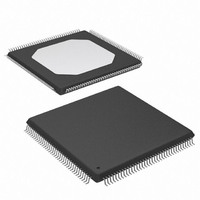XC3S250E-4TQG144C Xilinx Inc, XC3S250E-4TQG144C Datasheet - Page 63

XC3S250E-4TQG144C
Manufacturer Part Number
XC3S250E-4TQG144C
Description
IC SPARTAN-3E FPGA 250K 144TQFP
Manufacturer
Xilinx Inc
Series
Spartan™-3Er
Datasheet
1.XC3S100E-4VQG100C.pdf
(233 pages)
Specifications of XC3S250E-4TQG144C
Number Of Logic Elements/cells
5508
Number Of Labs/clbs
612
Total Ram Bits
221184
Number Of I /o
108
Number Of Gates
250000
Voltage - Supply
1.14 V ~ 1.26 V
Mounting Type
Surface Mount
Operating Temperature
0°C ~ 85°C
Package / Case
144-LQFP
For Use With
813-1009 - MODULE USB-TO-FPGA TOOL W/MANUAL
Lead Free Status / RoHS Status
Lead free / RoHS Compliant
Other names
122-1524
Available stocks
Company
Part Number
Manufacturer
Quantity
Price
Company:
Part Number:
XC3S250E-4TQG144C
Manufacturer:
XILINX
Quantity:
2 000
Company:
Part Number:
XC3S250E-4TQG144C
Manufacturer:
XILINX
Quantity:
2 400
Company:
Part Number:
XC3S250E-4TQG144C
Manufacturer:
Xilinx Inc
Quantity:
10 000
Part Number:
XC3S250E-4TQG144C
Manufacturer:
XILINX/赛灵思
Quantity:
20 000
Part Number:
XC3S250E-4TQG144CS1
Manufacturer:
XILINX/赛灵思
Quantity:
20 000
The outputs of the top or bottom BUFGMUX elements con-
nect to two vertical spines, each comprising four vertical
clock lines as shown in
these clock signals connect to the eight-line horizontal clock
spine.
Outputs of the left and right BUFGMUX elements are routed
onto the left or right horizontal spines, each comprising
eight horizontal clock lines.
Each of the eight clock signals in a clock quadrant derives
either from a global clock signal or a half clock signal. In
other words, there are up to 24 total potential clock inputs to
the FPGA, eight of which can connect to clocked elements
DS312-2 (v3.8) August 26, 2009
Product Specification
R
Figure 47: Clock Sources for the Eight Clock Lines within a Clock Quadrant
a. Left (TL and BL Quadrants) Half of Die
BUFGMUX Output
X0Y9 (Left Half)
X0Y8 (Left Half)
X0Y7 (Left Half)
X0Y6 (Left Half)
X0Y5 (Left Half)
X0Y4 (Left Half)
X0Y3 (Left Half)
X0Y2 (Left Half)
X1Y10 (Global)
X1Y11 (Global)
X2Y10 (Global)
X2Y11 (Global)
X1Y0 (Global)
X1Y1 (Global)
X2Y0 (Global)
X2Y1 (Global)
Figure
45. At the center of the die,
Clock Line
H
G
F
E
D
C
B
A
www.xilinx.com
b. Right (TR and BR Quadrants) Half of Die
X3Y9 (Right Half)
X3Y8 (Right Half)
X3Y7 (Right Half)
X3Y6 (Right Half)
X3Y5 (Right Half)
X3Y4 (Right Half)
X3Y3 (Right Half)
X3Y2 (Right Half)
BUFGMUX Output
in a single clock quadrant.
lines in each quadrant are selected from associated BUFG-
MUX sources. For example, if quadrant clock ‘A’ in the bot-
tom left (BL) quadrant originates from BUFGMUX_X2Y1,
then the clock signal from BUFGMUX_X0Y2 is unavailable
in the bottom left quadrant. However, the top left (TL) quad-
rant clock ‘A’ can still solely use the output from either
BUFGMUX_X2Y1 or BUFGMUX_X0Y2 as the source.
To minimize the dynamic power dissipation of the clock net-
work, the Xilinx development software automatically dis-
ables all clock segments not in use.
X1Y10 (Global)
X1Y11 (Global)
X2Y10 (Global)
X2Y11 (Global)
X1Y0 (Global)
X1Y1 (Global)
X2Y0 (Global)
X2Y1 (Global)
DS312-2_17_103105
Figure 47
Clock Line
H
G
F
E
D
C
B
A
Functional Description
shows how the clock
63

















